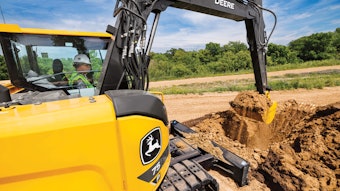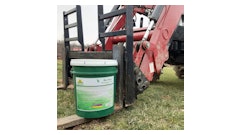
In the world of heavy equipment and construction operations, prioritizing safety is crucial. Imagine construction sites resembling fire stations, where teams constantly extinguish unexpected challenges. Shockingly, 48% of contractors grapple with unplanned chaos, draining hours and funds, stifling growth—a familiar struggle akin to New Year's resolutions filled with aspirations but often going back to old routines. While resources are finite, the key lies in effective planning and anticipating the unknown. The good news? Any company can shift towards a preventive approach.
Navigating the intricate mix of projects, equipment, materials, and personnel planning poses a significant challenge. However, seasoned contractors use their familiarity with terrain, clients, weather and equipment breakdowns to establish a robust foundation, recognizing discernible trends that allow for strategic provisions for the future.
Preventive Maintenance
Equipment management within this complex landscape can be complicated, and the components of an effective preventive maintenance (PM) plan go beyond routine checkups. Tailor these considerations to your specific situation:
- Address the vehicle maintenance schedule by implementing regular, scheduled services to ensure optimal performance.
- Purposeful equipment use ensures that each piece serves its intended function while maintaining fleet adequacy involves aligning the fleet size with operational needs.
- Strategic machine rotation ensures timely servicing by periodically shifting machines.
Training
Operator training plays a crucial role, covering comprehensive instruction on controls, modes, and technology. Understanding limitations is vital, ensuring operators grasp and comply with machine specifications. Regular cleaning and inspection, coupled with fluid management best practices, involve maintaining cleanliness and regularly inspecting and adjusting equipment and components.
OEM Schedule
Adhering to the original equipment manufacturer’s (OEM) service schedule is essential, strictly following the OEM’s suggested service intervals. Prompt repairs are key, addressing part repairs or replacements at the first sign of need. Encouraging timely diagnostic scans empowers operators to identify potential issues and conduct maintenance tests when necessary, such as cylinder cutouts, diesel particulate filter (DPF) regens or other routines aligned with manufacturer recommendations.
PM With a Diagnostic System
With PM, the team anticipates and replaces parts before they break. The challenge lies in identifying which parts and when without unnecessary replacement of components still in good condition. PM, the cornerstone of modern equipment care, involves a strategic plan to anticipate and address potential issues before they escalate, ensuring a longer lifespan for heavy equipment and minimizing the risk of unforeseen failures.
 Contractors need a strategic plan to anticipate and address potential issues before they escalate.Cojali USA
Contractors need a strategic plan to anticipate and address potential issues before they escalate.Cojali USA
Now, let's assume a commitment to implement some level of PM in equipment operations. How is it determined? In most cases, PMs are defined by the fatigue cycle of parts. If an element typically lasts 20,000 miles, change it just before reaching that point.
Maintenance schedules revolve around usage, time triggers and other factors, ensuring a proactive approach to equipment care. However, does PM rely solely on manufacturers' information, demanding that your service team possess manuals for each piece of equipment.
 Embracing PM is an investment in efficiency and return on investment, shielding against the unknown and safeguarding growth potential.Cojali USA
Embracing PM is an investment in efficiency and return on investment, shielding against the unknown and safeguarding growth potential.Cojali USA
- Schedule routine scans
- Conduct specific health measurements
- Perform road checks with the diagnostic tool connected
- Ensure calibrations before and after changing implements
These capabilities can align with the OEM’s recommendations. Using this integrated and dealer-level tool ensures a proactive stance in equipment care, sparing contractors and operators from drowning in a sea of manuals and steering clear of constant and costly trips to the dealership.
Maintenance Impact
Take a moment to evaluate the true impact of maintenance on your operational costs. Consider whether in-house equipment repair maintenance aligns with your objectives and, if so, whether you have the optimal tool to elevate the care of your equipment inventory. As you navigate these considerations, think about a diagnostic tool for cost-effective and seamless equipment operations.





























